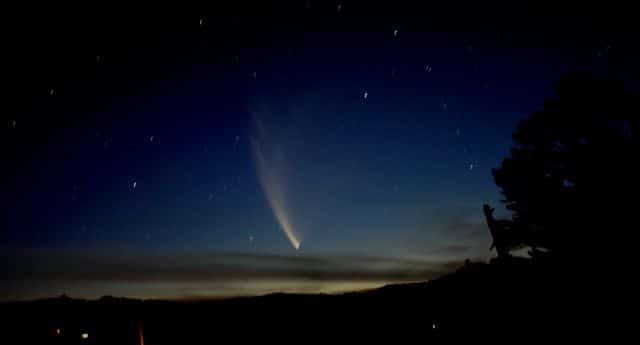Forget alien planets. Those of us that have exhausted ourselves trying every reasonable variation of the Drake Equation need to move on, right? Move over, alien planets, because alien comets are here.
Two astronomers from the European Space Agency (ESA) believe that the comet 67P may be hosting life under the shell of its thick, black outer crust. While the organic material that may exist within would be frozen, these astronomers are hopeful that this comet is home to hard proof that life exists outside of Earth’s atmosphere.
How will they begin the search? Possibly with some help from the Philae Lander, a space probe that managed to land on the surface of the comet 67P back in November of 2014. This lander has been pretty quiet in the news lately because shortly after it landed, it entered hibernation mode. The solar-powered lander would not have adequate sunlight to continue running until as late as August of 2015. Imagine ESA’s excitement when the lander awoke in June of 2015, ready to send information about its new home on 67P.
While the Philae Lander is conveniently located on the surface of a comet where clusters of microorganisms are suspected to exist, the probe is not actually properly equipped to detect life. The lander’s mission was strictly to learn more about the path, composition, and life of a comet, not to detect life ON a comet. Back when the plans for the lander were evolving, a few astronomers from ESA wanted to include life-detecting equipment. That was 15 years ago now, however, so the notion that life could possibly exist on a comet was quickly dismissed. While searching for life on 67P may have seemed like an odd notion even 15 years ago, the idea was not inconsistent with one of the many theories of how life began to develop on our planet.
Many scientists over the years have theorized that we actually have comets to thank for life here on Earth. It is believed that at one time, our Earth was little more than a ball of molten rock, making it hard for our planet to maintain any quantity of water because of the intensely hot temperatures. When Earth was pummeled by comets as the solar system was forming, the molten rock may have just melted the icy composition that made up those comets, bringing water to our planet at last… But it isn’t just the water that possibly jump-started life on earth. Comets also tend to contain linked pairs of amino acids called dipeptides that form in space, but also can be catalyzed to form essential complex molecules that are necessary for life as we know it.
While there is currently no plan to find these microbes, a few astronomers are making a push to begin the search. In the meantime, perhaps we should work on developing a Drake Equation that brings comets into the formula. With a suspected one billion in our area of the solar system alone, those numbers get big… fast.



